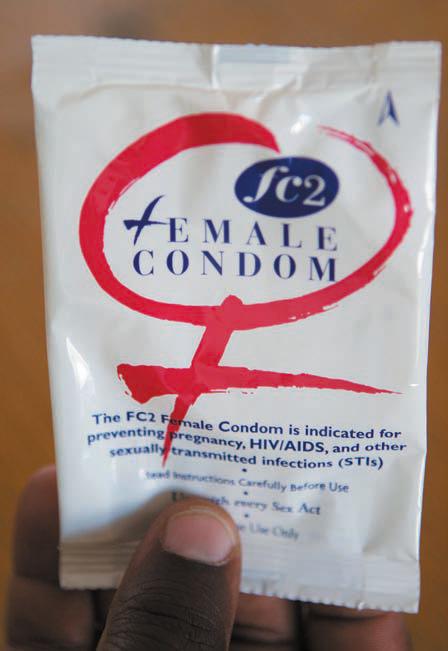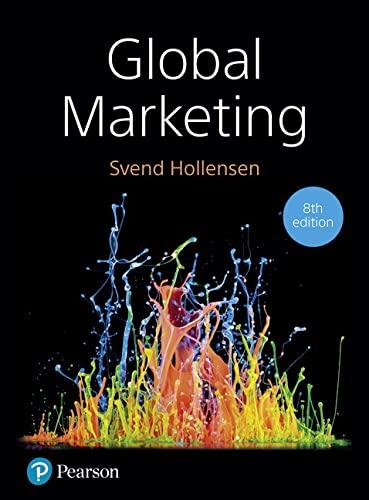On one of her few days off in autumn 2017, Senior Strategic Advisor Mary Ann Leeper is
Question:
On one of her few days off in autumn 2017, Senior Strategic Advisor Mary Ann Leeper is thinking about the great opportunities for the female condom. The potential market for her company’s product, the female condom, is huge. Leeper is thinking about how to reach FHC’s long-term goal: 3 per cent of the 12-billion-unit male condom market (US$3–4 billion in total value). She accepts that the product is still relatively young in the world market for contraceptives, but she thinks it must be possible to produce better positive financial results with such a high-quality product.
The big question is how . . .
The background to the AIDS epidemic
The history of HIV and AIDS is a relatively short one. As recently as the 1970s, no one was aware of this deadly illness. Since then, the global HIV/AIDS epidemic has become one of the greatest threats to human health and development. Since the peak of the HIV/AIDS epidemic in the 1990s, much has been learned about the science of HIV and AIDS, as well as how to prevent and treat the disease. Although there is still no cure for the disease, HIV-positive people who take a combination of three antiretroviral drugs can expect to recover their health and live for many years without developing AIDS, as long as they keep taking the drugs every day.
Background to the contraceptive market
The market for contraceptives has long been heavily influenced by social and political considerations.
From the early days of the pill, the growing numbers of abortions and the decision to make the pill freely available in the early 1970s to the emergence of the AIDS threat in the 1980s, this sector has always been more than a mere product category.

The total market consists of a very broad range of products, with oral contraceptives (the pill) and male condoms the most popular. Other, ‘natural’ forms of contraception are also practised, such as withdrawal and the safe period. Men and women may also be surgically sterilized.
Contraceptive products are available in pharmacies or general retail outlets, over the counter (OTC) or via prescription. Contraceptive products are also widely distributed in public clinics. In terms of the two leading forms of contraception, the contraceptive pill is available only on prescription, while condoms are widely available in chemists, supermarkets and vending machines, etc. Growth in distribution channels has been a feature of the condom market since the second half of the 1980s in response to AIDS.
Condom usage has risen substantially over the past decades, while use of the pill has remained broadly stable. The pill remains a popular contraceptive (based upon surveys of women – surveys of men and women show use of condom and pill as about equal).
The product
The female condom was invented by a Danish physician who obtained a US patent for the product in 1988, and subsequently sold certain rights to the product to a US company. The first female condom (FC1) became available in 1992. It was marketed under the name FC female condom in the US, Femidom in the UK and Myfemy in other markets, such as Japan.
The Female Health Company manufactures, markets and sells the female condom, which is a product under a woman’s control, unlike the male condom.
FHC has its headquarters in Chicago.
In 2005, FHC introduced a second-generation female condom, FC2, which had been developed to expand access to female-initiated prevention by offering a more affordable product, at a lower cost. FC2 can be produced at a unit cost that is nearly 50 per cent of that of FC1. FC2 was first marketed internationally in March 2007 and has been marketed in the US since August 2009. In October 2009, FHC completed the transition from FC1 to FC2, and production of FC1 in London was ceased.
Between FC2’s introduction in March 2007 and the end of 2016, approximately 300 million FC2 female condoms were distributed in 140 countries. It is sold directly to consumers in 16 countries.
In 2016, the end-user price per unit (FC2) at retail was around €0.40.......
Questions
1. How would you explain FHC’s internationalization process up to now?
2. What are the main cultural barriers for expanding global sales of the female condom?
3. What screening criteria would you use if FHC had plans to expand into new developing markets?
4. Besides having distribution to the public sector, particularly in Africa, Latin America and recently India, FHC is also trying to commercialize the female condom in consumer markets around the world. Where and how should FHC attack consumer markets?
Step by Step Answer:






